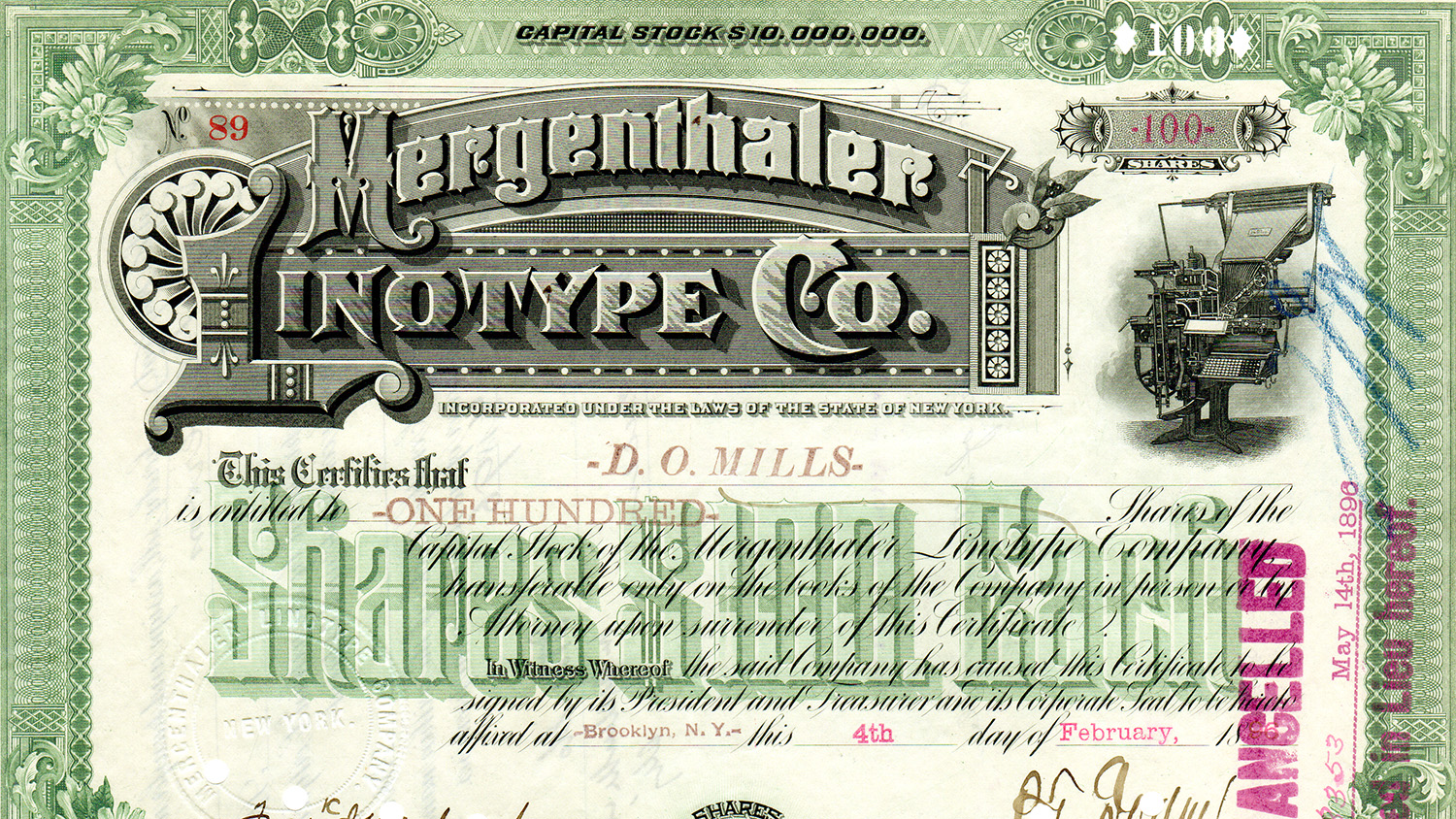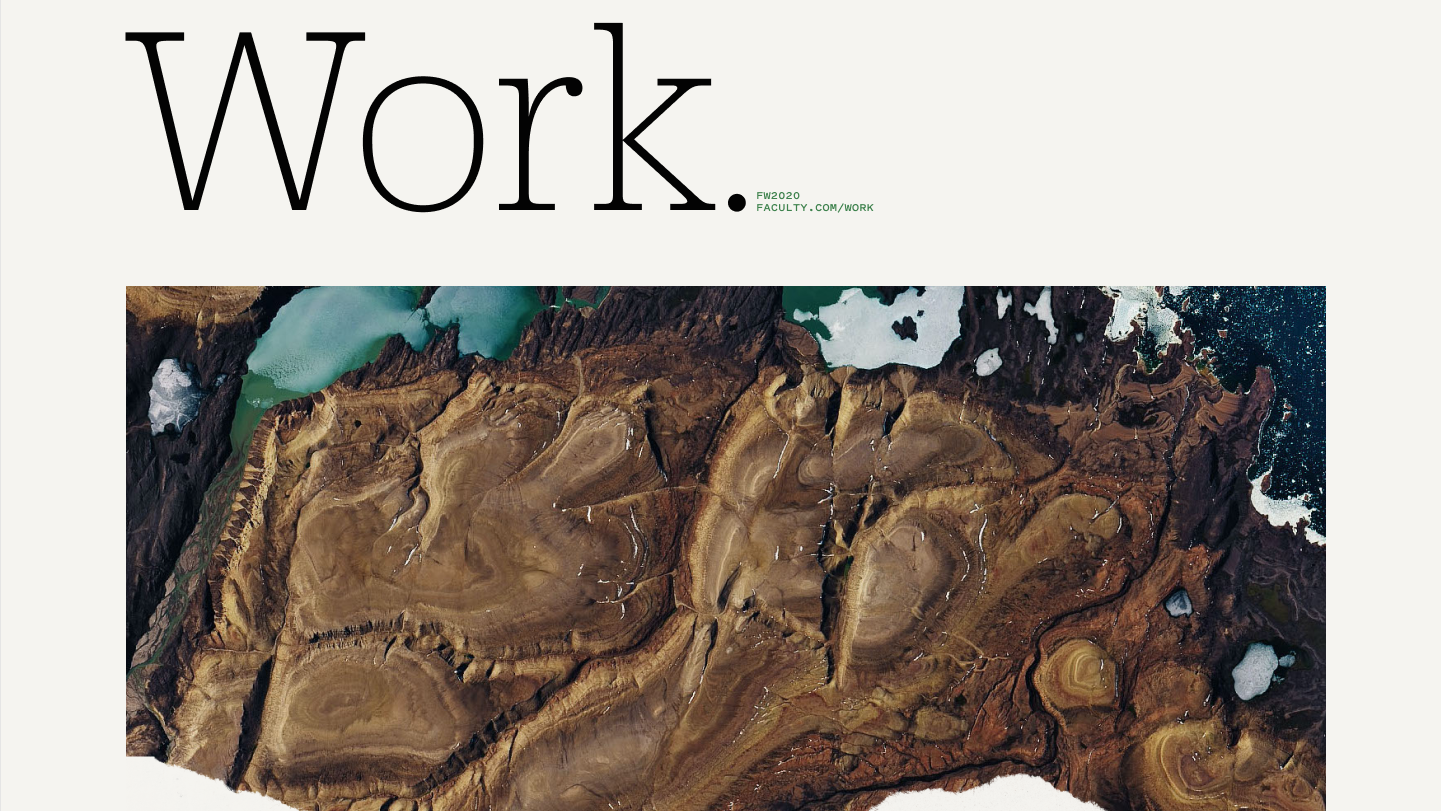
Airports, Ambassadors, & the Panic of 1896
The Fascinating History of a 120-Year-Old Stock Certificate
Published: 5 Dec 2016
Topics: Linotype, Typography, History
TL;DR: Big money was needed to fund the development of the Linotype, but times were also tough
An Introduction of Sorts
In 2010, I wasn’t a filmmaker and I didn’t know anything about newspaper production. I was simply a graphic designer living in Springfield, Missouri with a fascination with letterpress printing and a strange machine called the Linotype.
I had seen my first Linotype five years earlier and there was something about it that captured my curiosity and wouldn’t go away. To make a very long story short, I made a film about the Linotype which launched me on a journey down the rabbit hole of typesetting history and printing lore.
The Mergenthaler Linotype Company
I remember seeing a Mergenthaler Linotype Company stock certificate for the first time in the Boston home of historian Frank Romano. I was fascinated by the certificate for its intricate engraving, elaborate typography, and historical significance.
Frank became a central character in the film and his generous knowledge of the Linotype (he literally wrote the book on it) encouraged my research for the film.

After years of patient waiting to find a stock certificate at a reasonable price, I acquired the one above from a scripophily auction in New Jersey. Upon receiving the certificate in the mail, I started examining it and became curious about the people behind the signatures.
In this certificate, 100 shares of Mergenthaler Linotype Co. stock were purchased on February 4, 1896 at $100 per share. This $10,000 investment in 1896 is equivalent to $268,000 in 2016 dollars, so it was no small sum of money at the time.
This got me wondering: Who would have such wealth that they could invest in a new, and not yet proven, company?
Darius Ogden Mills
According to Wikipedia (which is good enough for this silly little research piece) D.O. Mills was a prominent banker and investor born in 1825 in New Salem, New York. After starting out as a bank clerk in New York, he joined the California Gold Rush in 1848 to establish a bank investing in companies that supported the mining industry.
He never invested directly in gold or silver mining because he considered it too risky but instead built banks and railroads for mining operations. At one point in his life, he was considered the wealthiest citizen of California. He married Jane Templeton Cunningham in 1854 and they had two children, Ogden and Elisabeth.
Mills is well known for purchasing part of Rancho Buri Buri which is now the location of the town of Millbrae, California and San Francisco International Airport. The airport was opened by his grandson, Ogden in 1927 and was originally named Mills Field Municipal Airport.


Later in life, D.O. Mills returned to New York to become a financier and philanthropist. He built several buildings in Manhattan including three “Mills Houses” which were “poor men hotels” that rented out tiny rooms at affordable prices.

Mills died at his Millbrae home in 1910 leaving an estimated estate of $50 to $60 million dollars (over $1.2 Billion in 2016 dollars) to his two children. According to Frank Romano, the Mills family continued to be involved at a senior level or on the board of Mergenthaler Linotype until the 1960s.
The Connection to Linotype
Besides D.O. Mills’ appetite for investment, why would he put money into the young Mergenthaler Linotype Company in 1896? Obviously, there was the potential to make large sums of money, but it was most likely because his daughter Elisabeth married the infamous Whitelaw Reid.

Whitelaw Reid was a politician and publisher. He ran the powerful Republican New York Tribune newspaper and was know for his bitter fights against unions in his print shop. He is also known as the head of the “Baleful Syndicate” that wrestled power from Ottmar Mergenthaler (the inventor of the Linotype) and took control of the Mergenthaler Linotype Company in the beginning years.

Reid had a grandiose political career with experience as the Republican vice presidential nominee in 1892, as an ambassador to France and England, and he even helped negotiate peace with Spain after the Spanish-American War. Reid died while serving as ambassador to England in 1912.
The Panic of 1896
Something that I found interesting when looking at the back of the certificate was that it was purchased in February of 1896 and quickly sold in May of the same year. Why would the stock be sold so quickly? Although this is speculation, it may be connected with the Panic of 1896.

The economic situation of the United States in the 1890s is complex, but the Panic of 1896 was connected to the reduction of silver reserves and the uncertainty of the gold standard, which forced the stock market to drop to record lows.
According to Frank Romano, Mills most likely needed the cash to cover his debts and sold the Linotype stock. In the end, it is likely that Mills got his stock back by way of splits and special distributions by the company in later years.
The Other Signatures
The other signatures on the stock certificate are two names who were influential in the early days of the Mergenthaler Linotype Company.
P.T. Dodge

Phillip Tell Dodge was the president from 1891–1928 and can be credited as the person that really built the company. He was the original patent attorney who arranged an agreement to use the Benton Punch-Cutting Machine and negotiated the purchase of the Schuckers space band patent — without these, the Linotype would not have become the dominant typecasting machine that it became worldwide.
Dodge had a love for inventions and through his work as a patent attorney he filed the paperwork for the Remington Typewriter, spoke through the first telephone, and rode one of the first bicycles in America when he brought it from Europe in 1880. He also was the President of the International Paper Company and Columbia Records.
His son, Norman Dodge succeeded him as president of Linotype in 1928.
Frederick J. Warburton

Frederick J. Warburton was the secretary and treasurer from the earliest days of the Linotype Company. His association with Mergenthaler started in 1883 and he was the director of the National Typographic Company (a precursor to Mergenthaler Linotype Co.) which owned the foreign patent rights of the Linotype.
The June 1917 Linotype Bulletin describes Warburton’s contribution to the Linotype:
“The genius of Mergenthaler produced the first Linotype, but Mr. Warburton’s courage, persistence and unvarying patience nurtured that genius and sustained it by innumerable sacrifices and unremitting toil.”
According to an obituary published in November 1917, “Mr. Warburton died, as he wished, ‘in the harness.’ He worked up to a few days before his death” at the age of 76.
So there you have it: An investigation into a 120-year-old stock certificate with some fairly impressive and interesting people behind its history. I hope you enjoyed it!
As a fun bonus, here is a detail image of the lettering on the stock certificate. You can see more examples of this style here.


